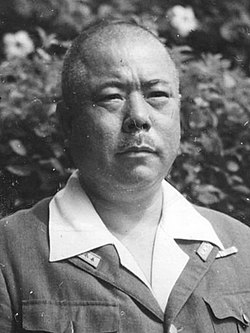

On 20 October 1944, troops of the United States Sixth Army under the direct command of Lieutenant General Walter Krueger, invaded the Philippine island of Leyte . This operation was the beginning of General Douglas MacArthur's fulfillment of his promise in March 1942 to the Filipino people that he would liberate them from Japanese rule.
Contents
- United States
- Northern landing area
- Southern landing area
- Sixth Army reserve
- Japan
- Notes
- References
- Bibliography
The choice of Leyte was the result of heated discussion at the highest levels of the US military and government. Chief of Naval Operations Admiral Ernest J. King had forcefully advocated for an invasion of the island of Formosa, about 300 miles (480 km) north of the Philippines, insisting that it would both bolster the morale of the Nationalist Chinese, then fighting the Japanese occupation of their country, and provide a much closer base for military operations against the Japanese home islands. In the event, MacArthur's viewpoint that the United States needed to be seen as following through on its promise to liberate the Filipino people from Japanese oppression won out.
Summary of US ground forces:
![]() US Sixth Army
US Sixth Army
Lieutenant General Walter Krueger
Approx. 202,500 total officers and enlisted [1]
- Northern landing area
-
 X Army Corps
X Army Corps - Lieutenant General Franklin C. Sibert
- Left: 24th Infantry ("Taro") Division
- Right: 1st Cavalry Division
-
- Southern landing area
-
 XXIV Army Corps
XXIV Army Corps - Lieutenant General John R. Hodge
- Left: 7th Infantry ("Bayonet") Division
- Right: 96th Infantry ("Deadeye") Division
- Reserve: 11th Airborne ("Angels") Division
-
- Reserves
- Landed 14 Nov: 32nd Infantry ("Red Arrow") Division
- Landed 23 Nov: 77th Infantry ("Statue of Liberty") Division
















